
Essential Tips for Dining Room Lighting Fixtures Hanging Heights
The right lighting can completely transform the look and feel of your dining room. Whether you’re hosting a dinner party or enjoying a quiet meal with family, dining room lighting plays a key role in setting the ambiance. One of the most important factors when choosing a illumination fixtures for your dining room is getting the hanging height just right. If your pendant, chandelier, or other light fixtures are hung too high or too low, it can affect both the functionality and aesthetic of the space.
In this guide, we’ll share essential tips for determining the perfect hanging height for your dining room light setups to create the ideal atmosphere.
Standard Height Guidelines for Dining Room Lighting
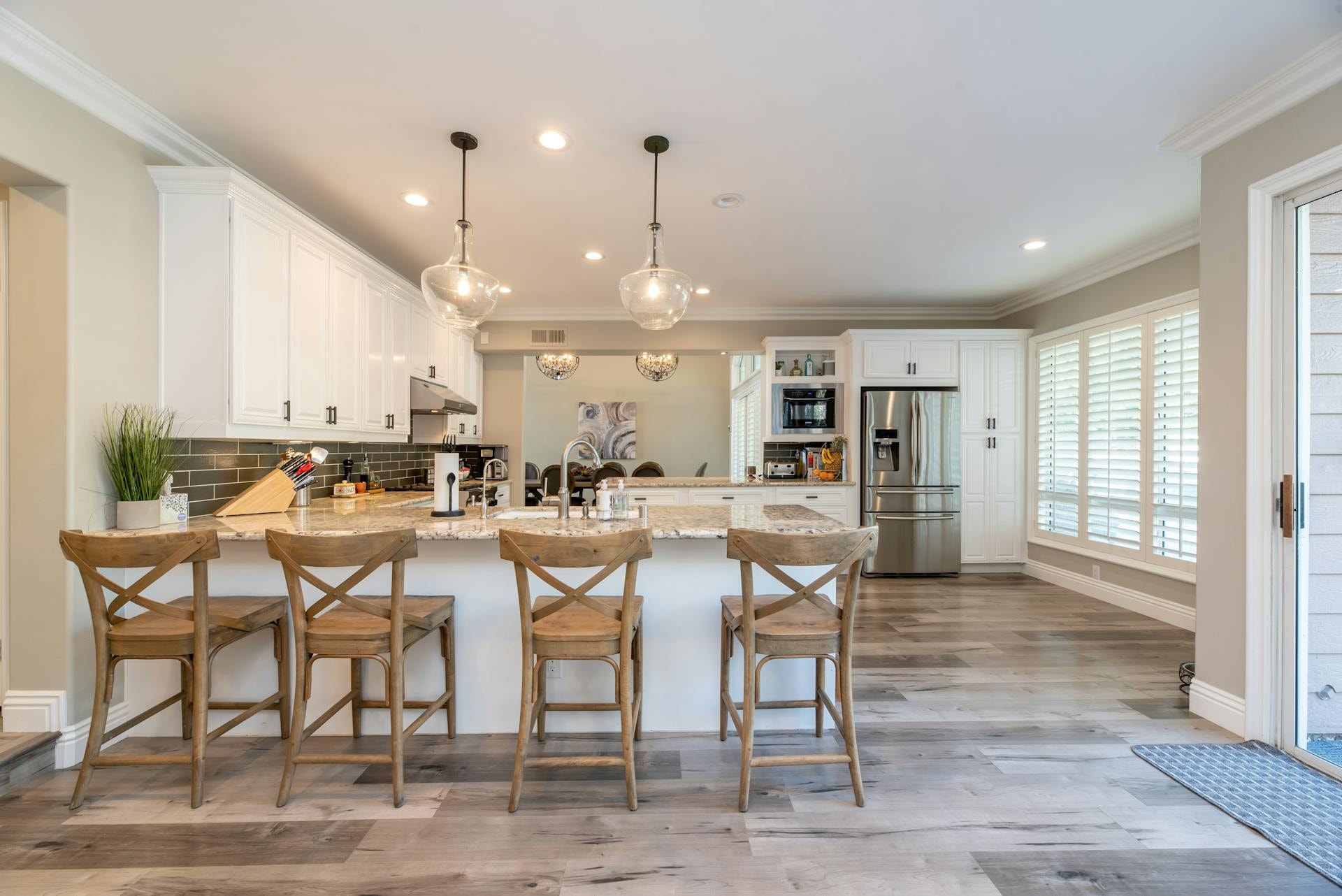
The general rule of thumb when hanging a lighting elements, such as a chandelier or pendant light, over a dining table is to hang it 30 to 36 inches above the tabletop. This ensures ample lighting while also maintaining enough space for clear sightlines across the table, which is important for conversation.
Why this height works:
Optimal Lighting: A fixture hung within this range ensures enough light without being too harsh or dim.
Clear Sightlines: The light won’t obstruct views across the table, allowing diners to interact freely.
Comfortable Atmosphere: It’s high enough to avoid interference with the movement of people but low enough to provide concentrated lighting over the table.
Understanding Lighting Fixture Heights
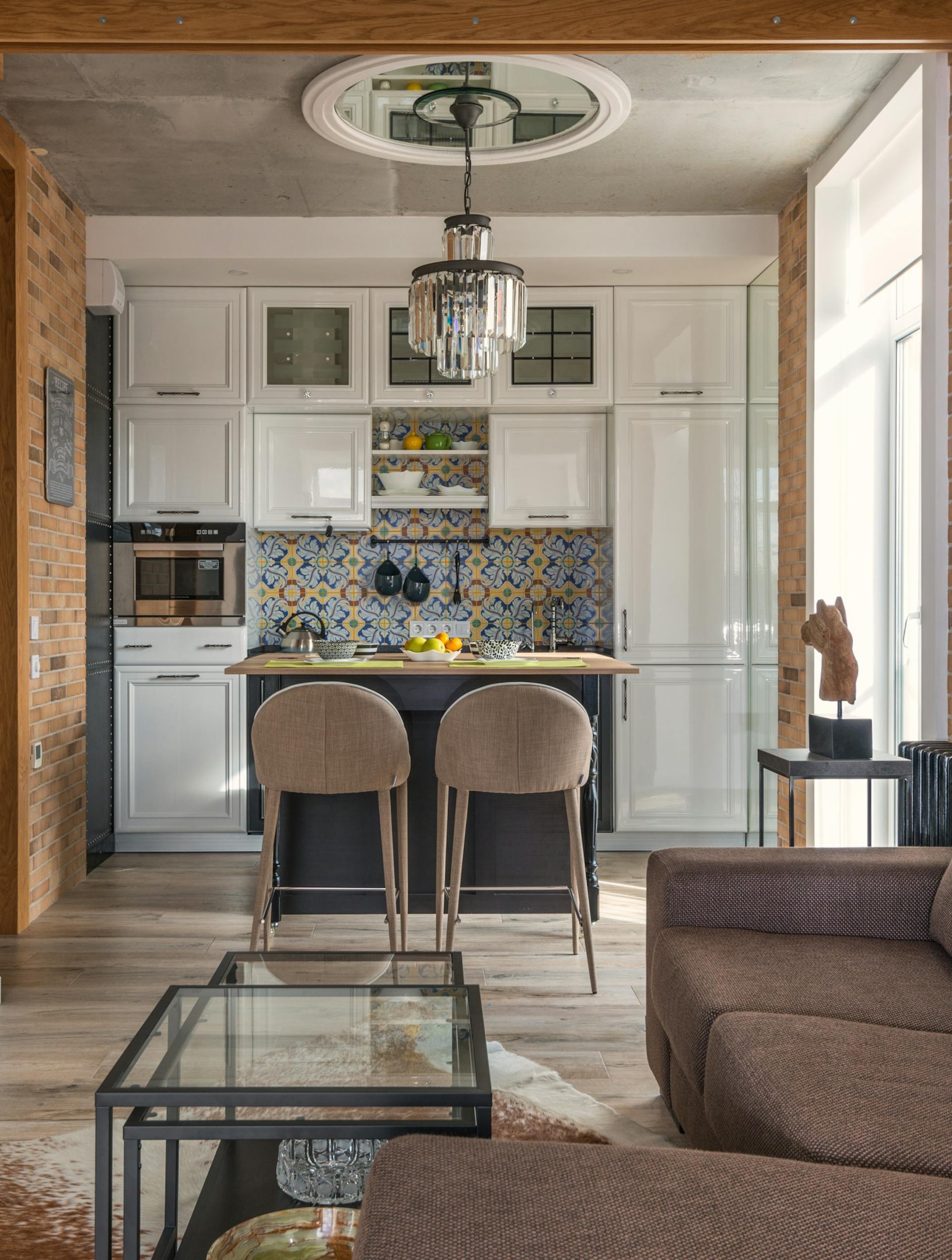
Choosing the best lighting for your space, especially in areas like the dining room or kitchen, often comes down to understanding key concepts like downlights, ambient light, and the right pendant light height. When it comes to medium-sized pendants in spaces with eight-foot ceilings, the general recommendation is to hang kitchen pendants and dining room lighting at a height that allows for both function and style, typically around 2 to 3 feet above the table. But how much light you need depends on factors like the size of the room, personal preference, and whether you're using a few or how many pendants. Ultimately, the goal is to create a balanced lighting scheme that enhances the space without overwhelming it, making the most of both task and ambient lighting.
Determine the optimal height for light fixtures in your meal room by considering factors like style, finish, and shape.
The position of light fixtures can significantly impact the room’s design and functionality.
Consider the ceiling height and room layout when selecting light fixtures.
Measure the distance from the floor to the table to determine the ideal hanging pendant lights or chandelier height.
Pendant Lighting Considerations
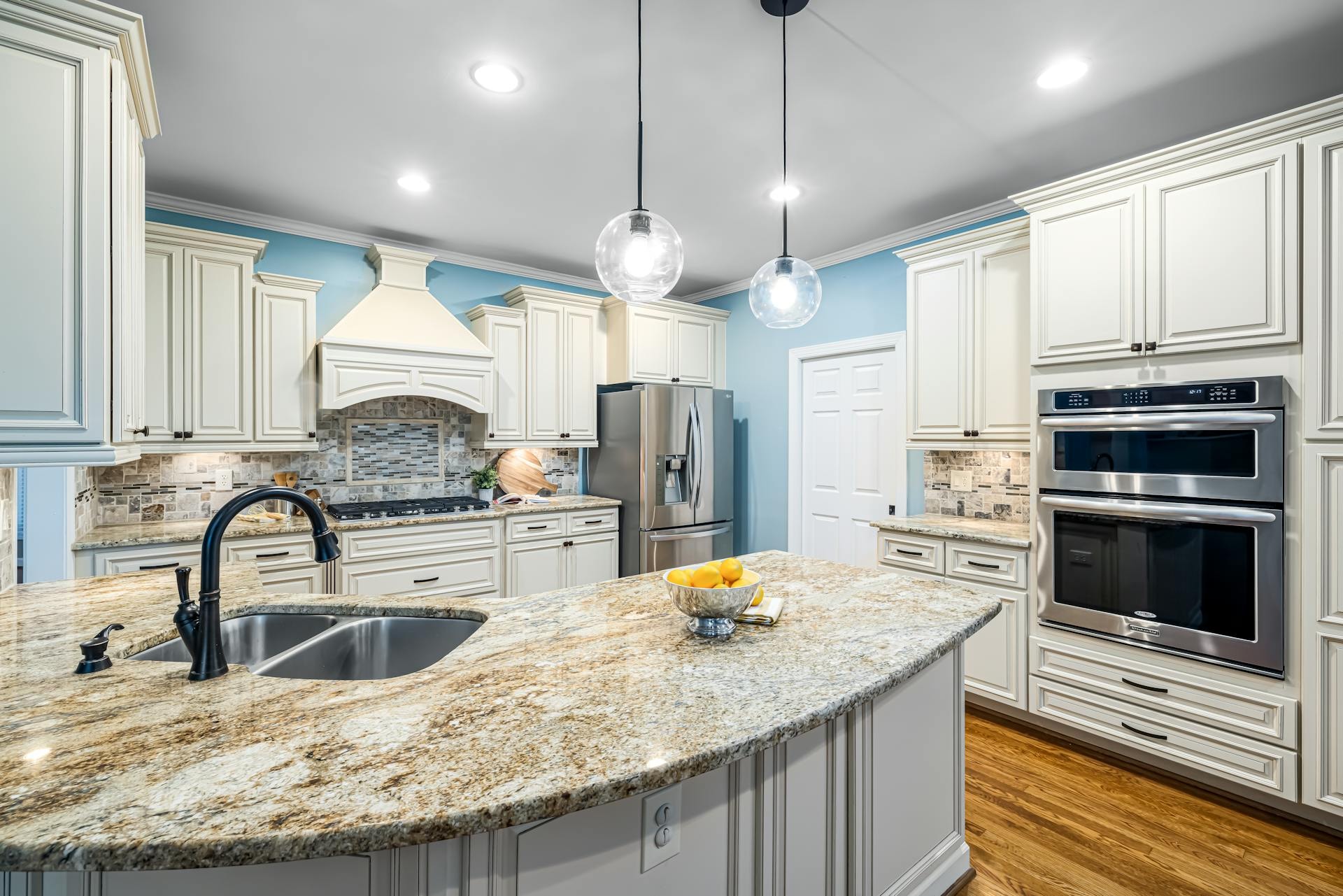
Pendant lighting adds a chic look to dining rooms, but it’s critical to measure properly and take note of ceiling height and light fixture length.
The pendant light height from the floor should be around 72 inches, with the bottom of the fixture at least 30 inches from the top of the dining hall table.
Chandeliers over eating space tables should have a diameter between half or two-thirds that of the table.
Consider using open pendants to create a sense of openness in a feasting area with low ceilings.
How to Hang Pendant Lights
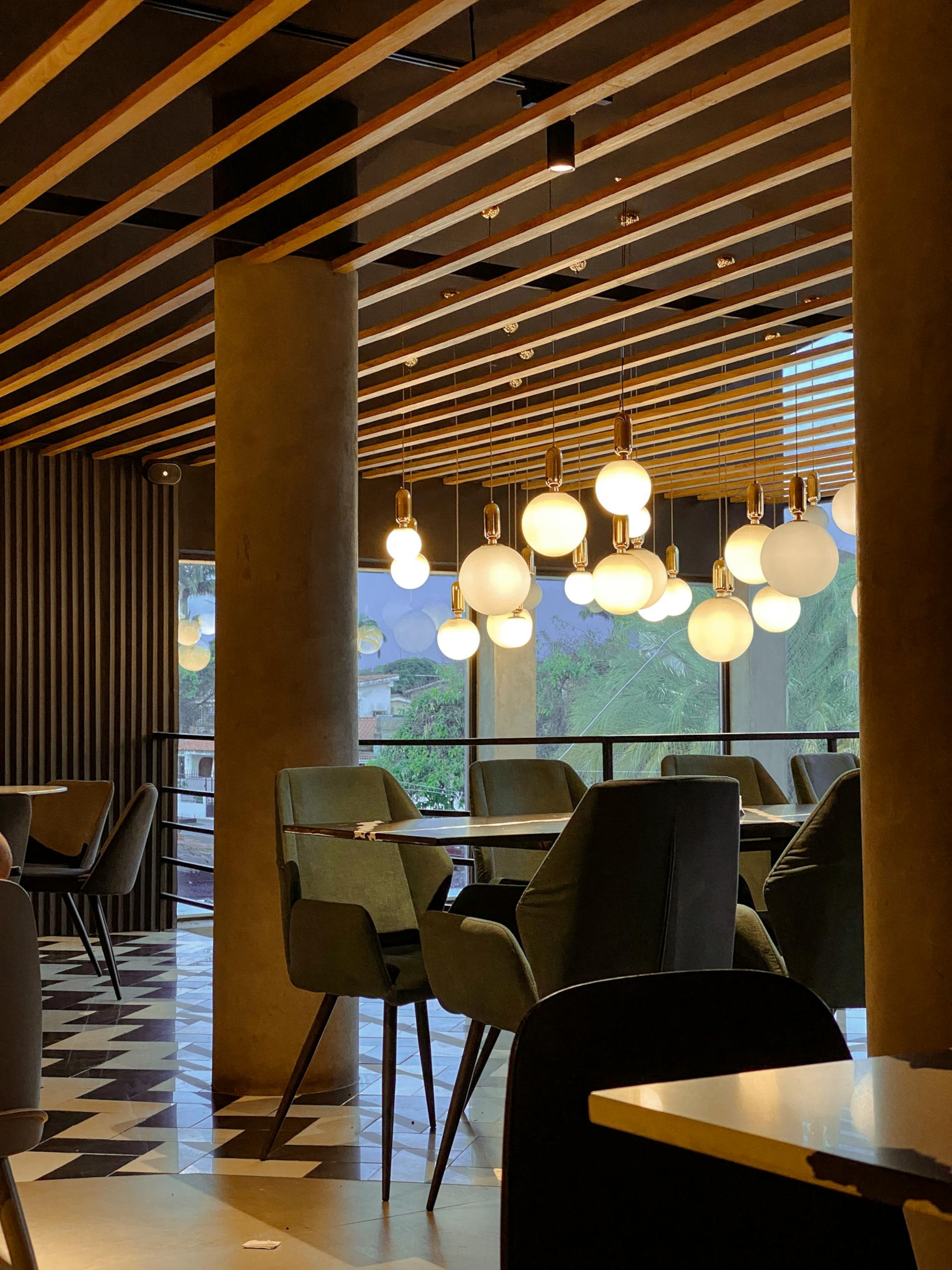
Determine the length of your dining area ceiling light, considering the location of the fixture, amount of light needed, and size of the pendant or chandelier.
Hang pendant lights above a dining table or kitchen island 30-36 inches above the surface.
Consider the height of the ceiling and the size of the light fixture when deciding how high to hang a pendant light or chandelier.
Measure the distance from the floor to the table or island to determine the ideal installation height for a pendant light or chandelier.
Ceiling Height Considerations
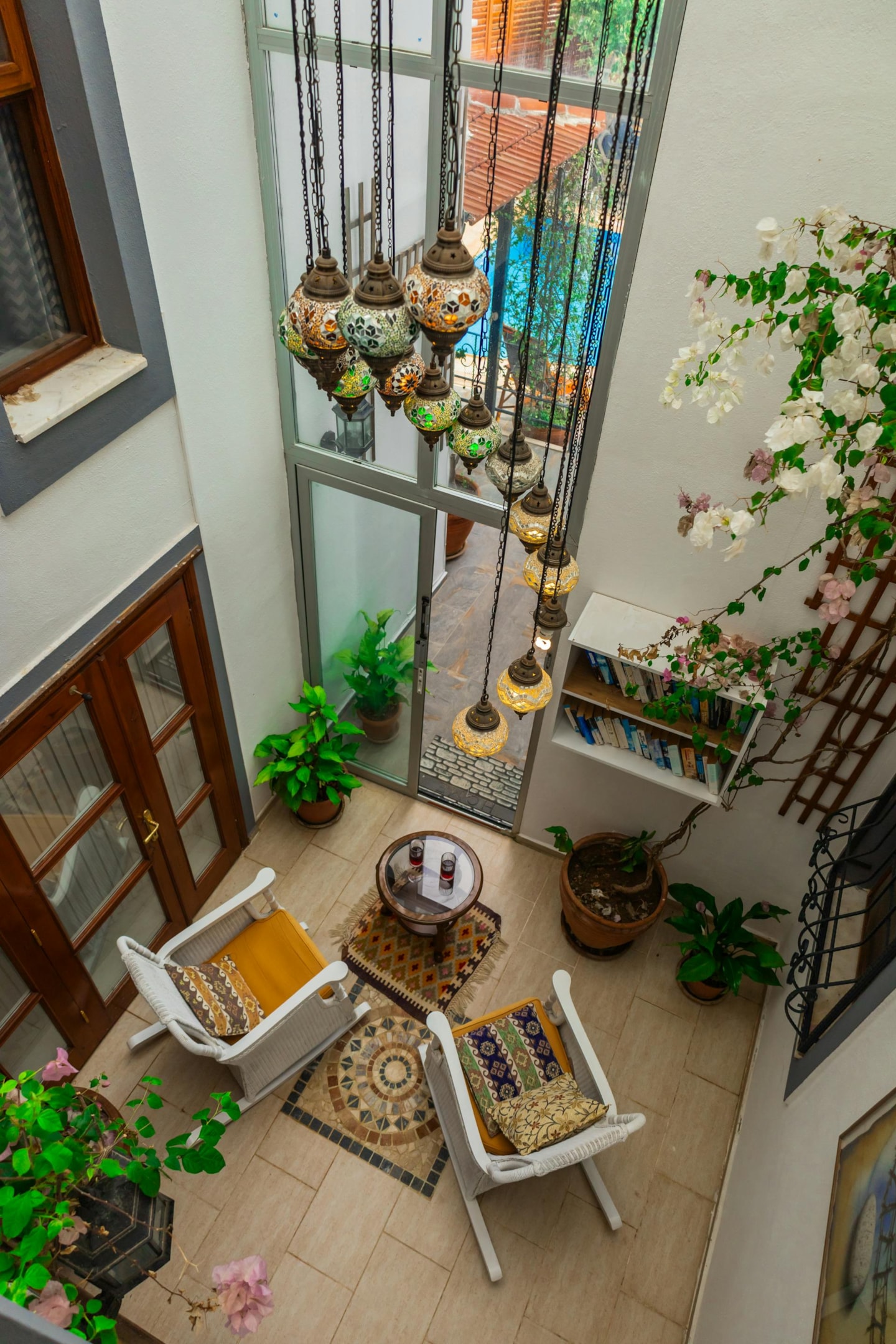
During your kitchen remodel, consider adding more pendants above the island for better illumination and a stylish focal point—two pendants can provide just the right amount of light without overwhelming the area.
it's important to consider the island height, especially if you have 8-foot ceilings. If your kitchen features a smaller island, adding an additional foot in height for the island can help improve the overall flow of the area, ensuring that lighting and functionality are not compromised. Avoiding the wrong answer when selecting dimensions can make all the difference in achieving the perfect balance between style and practicality.
The standard ceiling height is eight feet, but many homes have taller ceilings.
Before installing new light fixtures, consider the ceiling height and room layout.
-
General guidelines for different rooms in your home include:
Standard height for most rooms
Taller ceilings for living rooms and dining rooms
Lower ceilings for bathrooms and kitchens
Lighting Fixture Types and Hanging Heights

Different types of light fixture have different hanging heights, such as pendant lights, chandeliers, and downlights.
Consider the type of light fixture and its intended use when determining the installation height.
Pendant lights are often used above dining tables and kitchen islands, while chandeliers are often used in entryways and living rooms.
Recessed lighting is often used in kitchens and bathrooms.
Multiple Fixtures vs. One Large Fixture
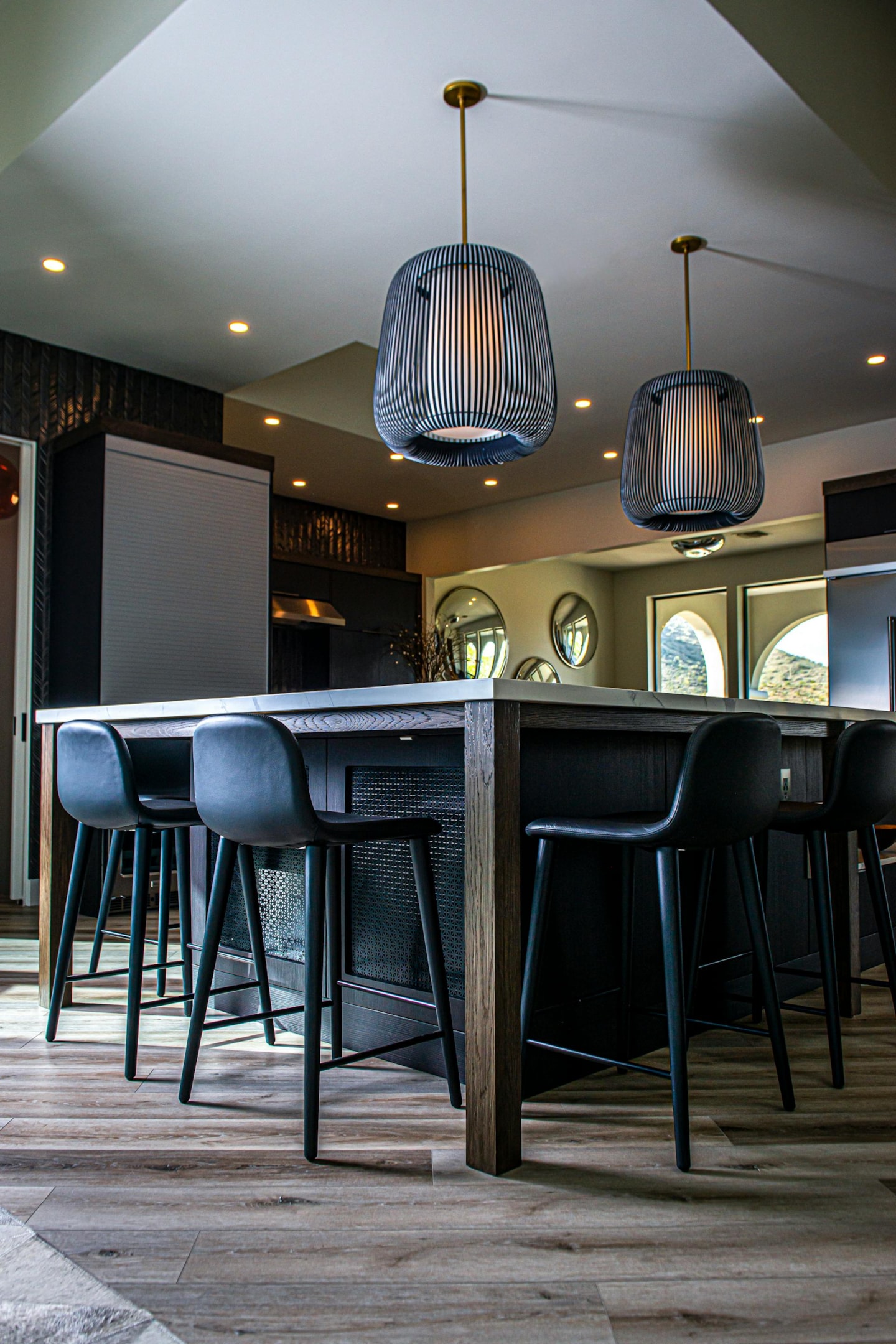
For larger dining tables, it’s often best to use hanging multiple pendants or chandeliers rather than a single large light fixture. When using multiple hanging lights, you should still follow the 30 to 36 inches rule, but also ensure they are spaced out evenly. Typically, 12 to 24 inches between fixtures works well to maintain a balanced look.
Long Dining Tables: For very long tables (over 6 feet), consider using two or three pendant lights spaced evenly across the table for even illumination.
Shape and Size of the Light Fixture
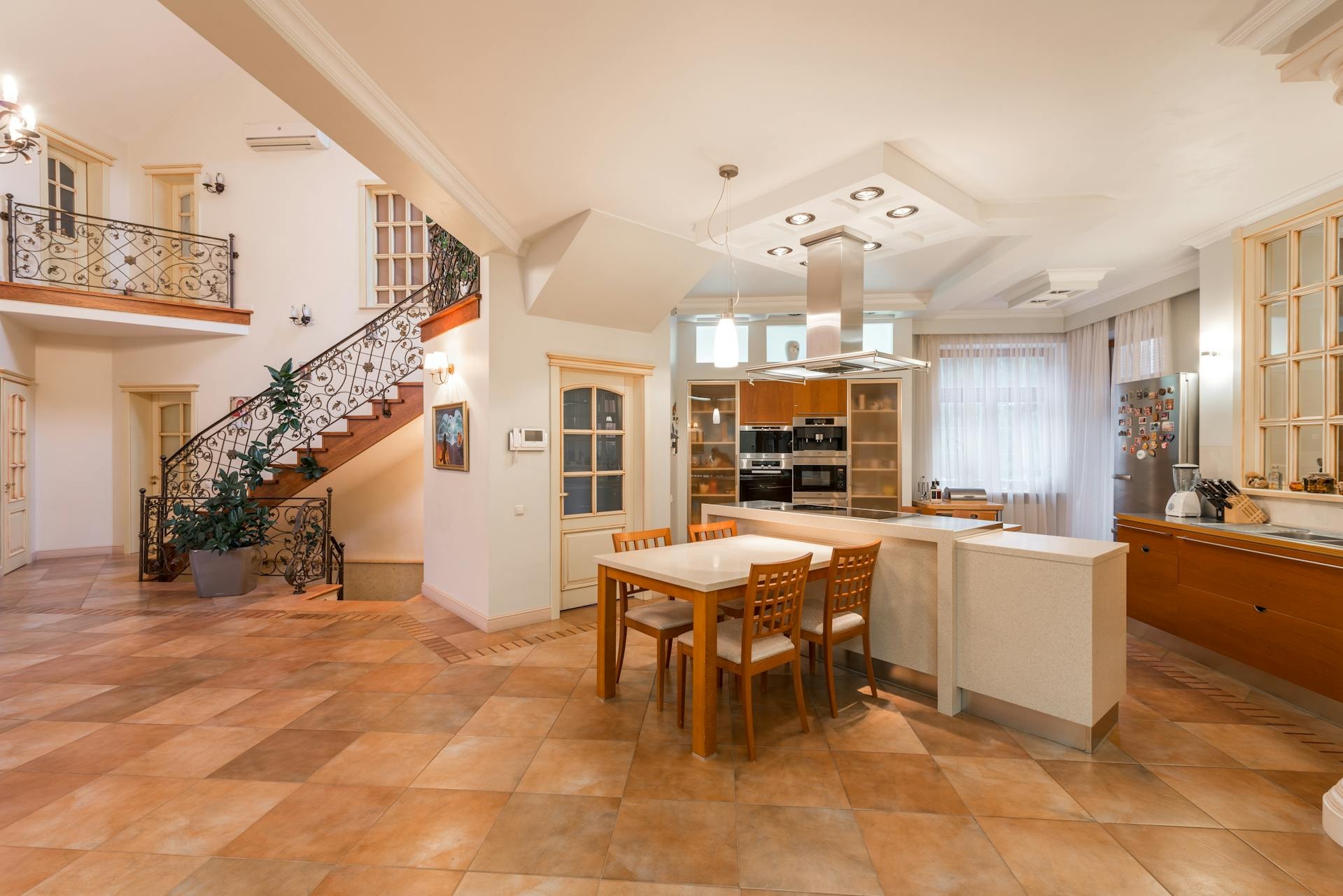
The size and shape of your dinner room lighting fixture also influence the installation height. A larger, more elaborate chandelier will require a higher installation height compared to a smaller, simpler pendant.
Small Fixtures: Smaller pendant lights or chandeliers can hang lower, especially in a more compact meal room, as they are less likely to overpower the space.
Large Fixtures: Large, statement-making chandeliers or multi-tiered fixtures should generally hang higher to avoid overwhelming the space and to provide even light distribution.
Testing Lighting Heights Before Installation
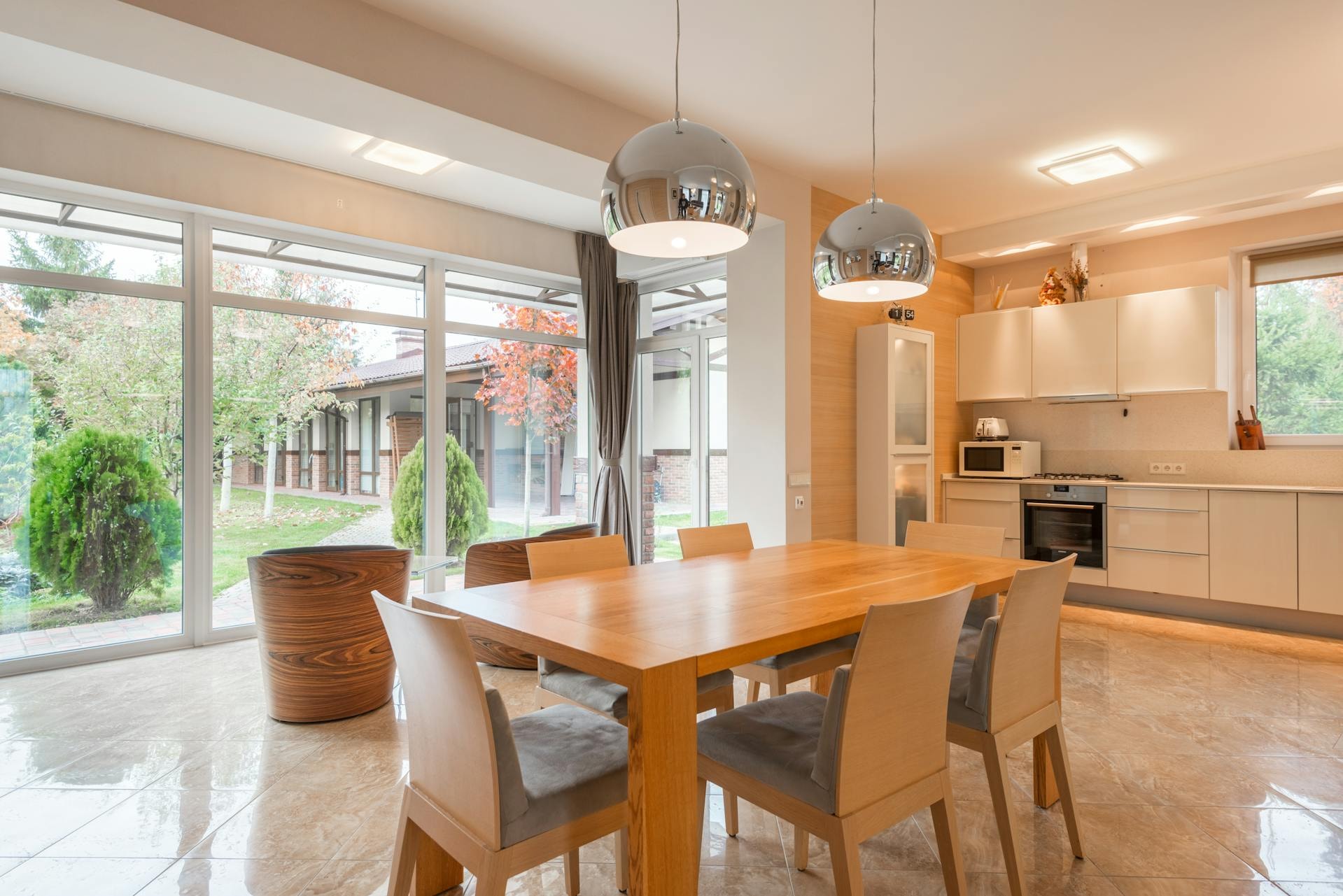
Use balloons hanging on strings to test out lighting heights before installation.
This trick can help you determine the proper spacing and size of pendant lighting fixtures.
Consider the height of the ceiling and the size of the light fixture when testing lighting heights.
Make adjustments as needed to achieve the desired look and functionality.
Different Lighting Fixture Types and Their Ideal Heights
When it comes to lighting your dining room or kitchen, it's important to understand how different types of fixtures require different hanging heights to optimize both function and aesthetics. Below are common lighting fixture types and the ideal hanging heights for each:
1. Pendant Lights
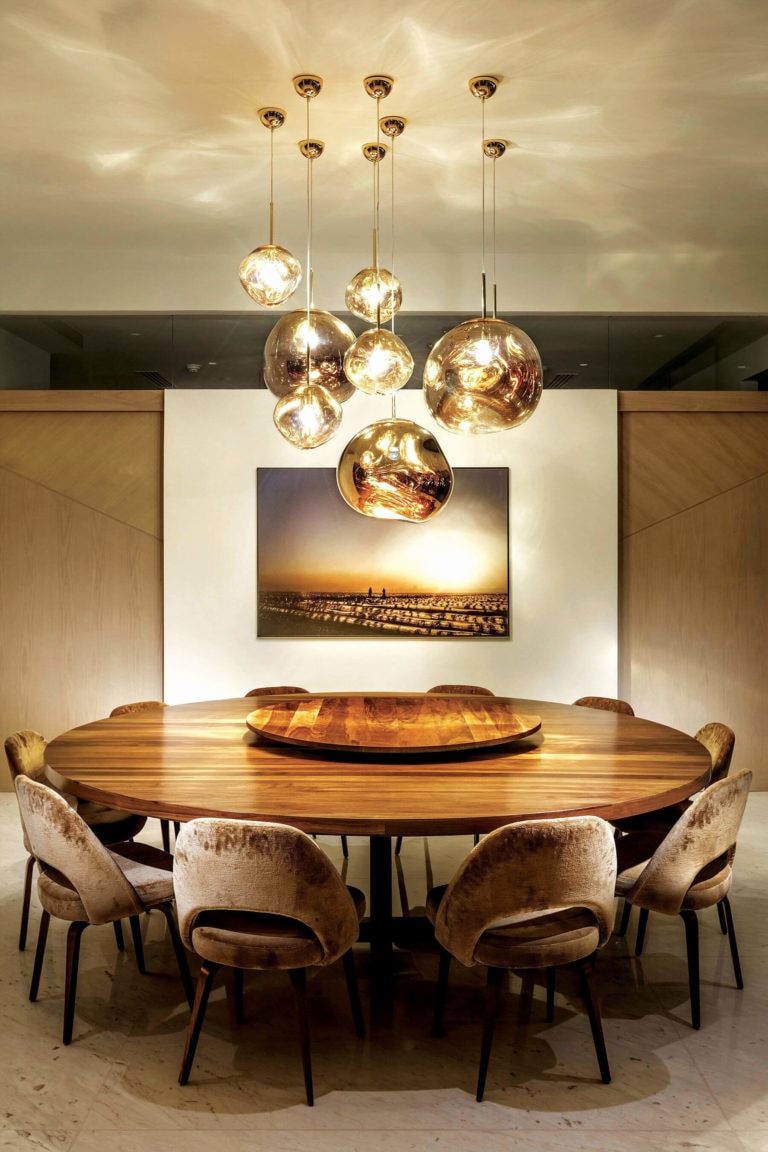
Ideal Height: 30-36 inches above the tabletop or surface.
Why It Works: Pendant lights are versatile and can be used in both dining rooms and kitchens. For dining areas, hanging pendants within this range provides optimal light without obstructing views across the table. In kitchens, pendant lights hung over islands help focus light while maintaining a clean, open look.
2. Chandeliers
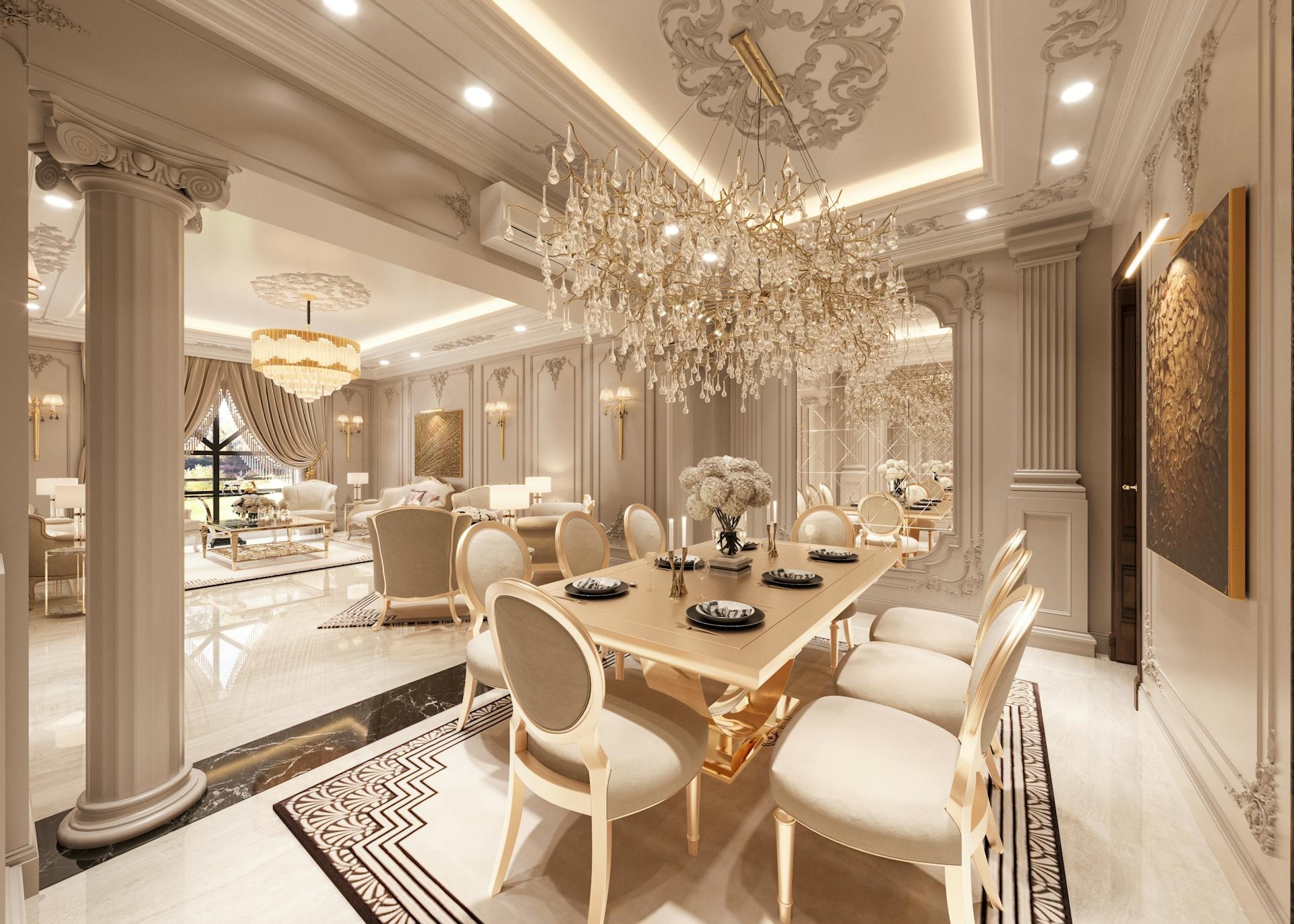
Ideal Height: 30-36 inches above the dining table (for smaller chandeliers); for larger, multi-tiered chandeliers, they should be hung higher, especially in rooms with tall ceilings.
Why It Works: Chandeliers make a statement and can be a focal point of the dining room. Hanging them at the proper height ensures they don't interfere with sightlines while providing ample light. For larger chandeliers, it's essential to keep the fixture high enough to avoid overwhelming the space.
3. Track Lighting
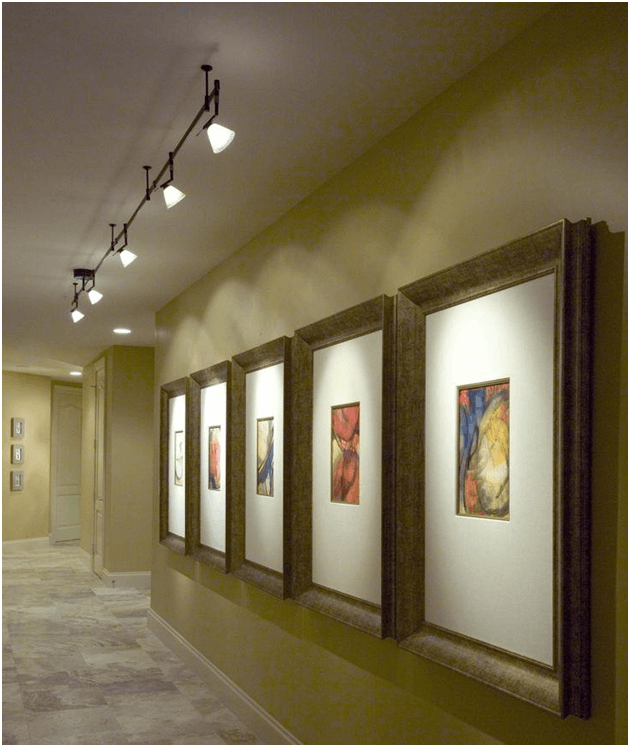
Ideal Height: Mounted 7-9 feet from the floor.
Why It Works: Track lighting offers flexibility as it can be directed to specific areas of the room. This is perfect for accent lighting or for areas that need focused illumination, such as over artwork or a kitchen island. The height should be adjusted to prevent shadows and to ensure proper lighting spread.
4. Wall Sconces
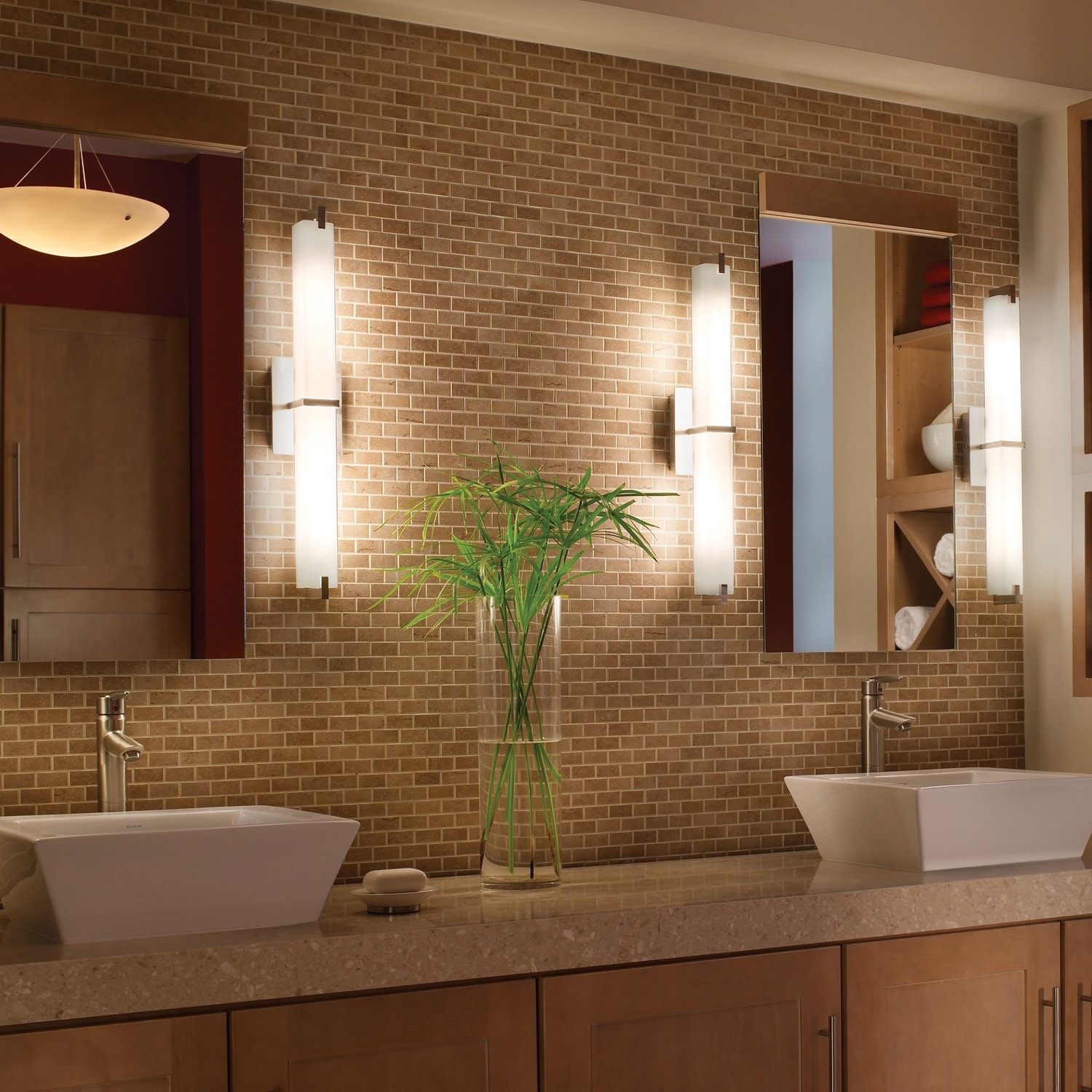
Ideal Height: 60 to 72 inches from the floor, or at eye level.
Why It Works: Wall sconces provide ambient or accent lighting and are often used to complement other illumination fixtures. Installing them at eye level ensures they illuminate the room effectively without creating harsh shadows or glare.
5. Flush Mount Lights
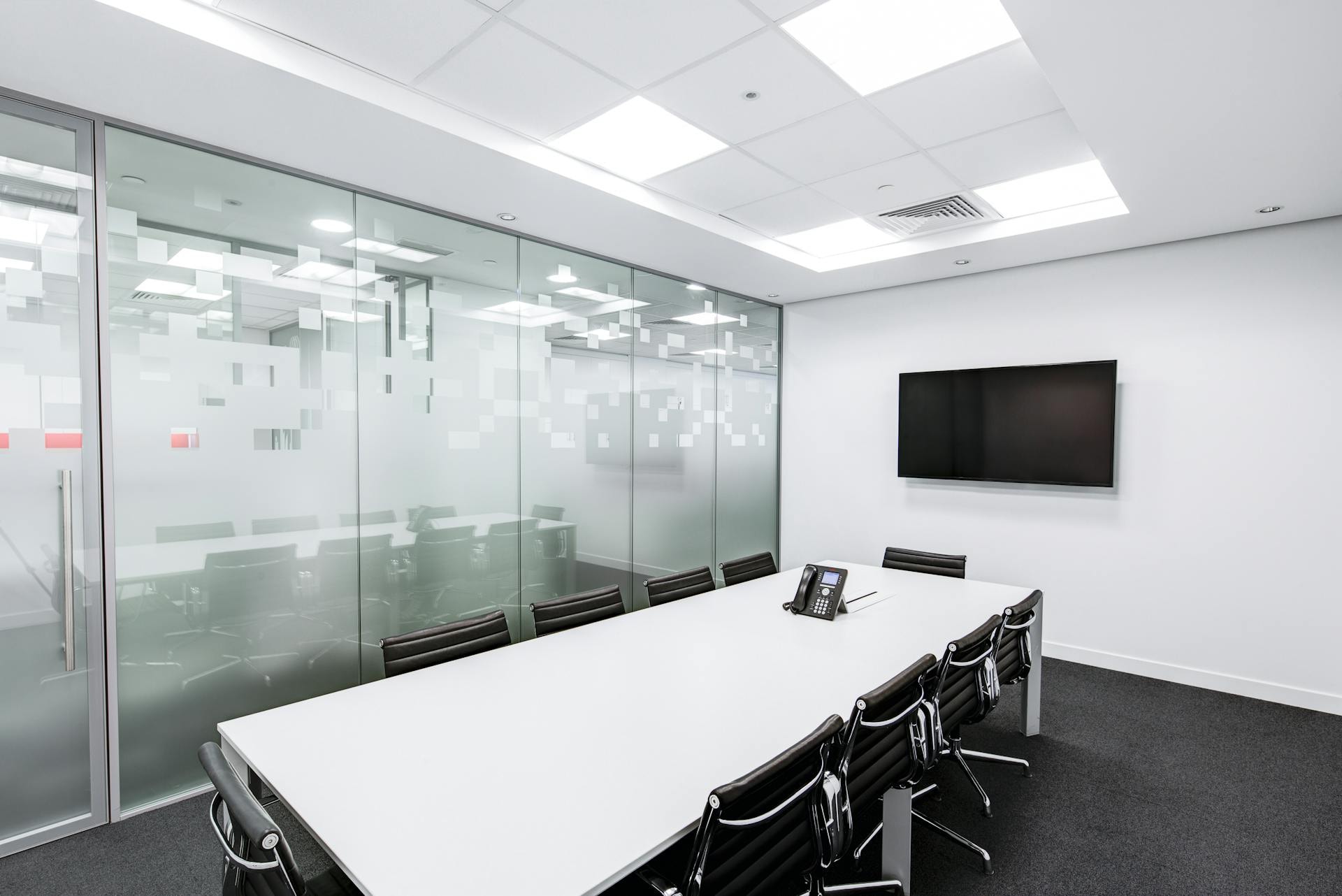
Ideal Height: Installed directly on the ceiling, typically around 8 feet high.
Why It Works: Ideal for rooms with low ceilings, flush mount lights are great for providing general illumination without hanging down from the ceiling. This fixture type is perfect for smaller spaces or rooms with a lower ceiling height, such as hallways, bathrooms, or kitchens.
6. Chandeliers in High Ceilings
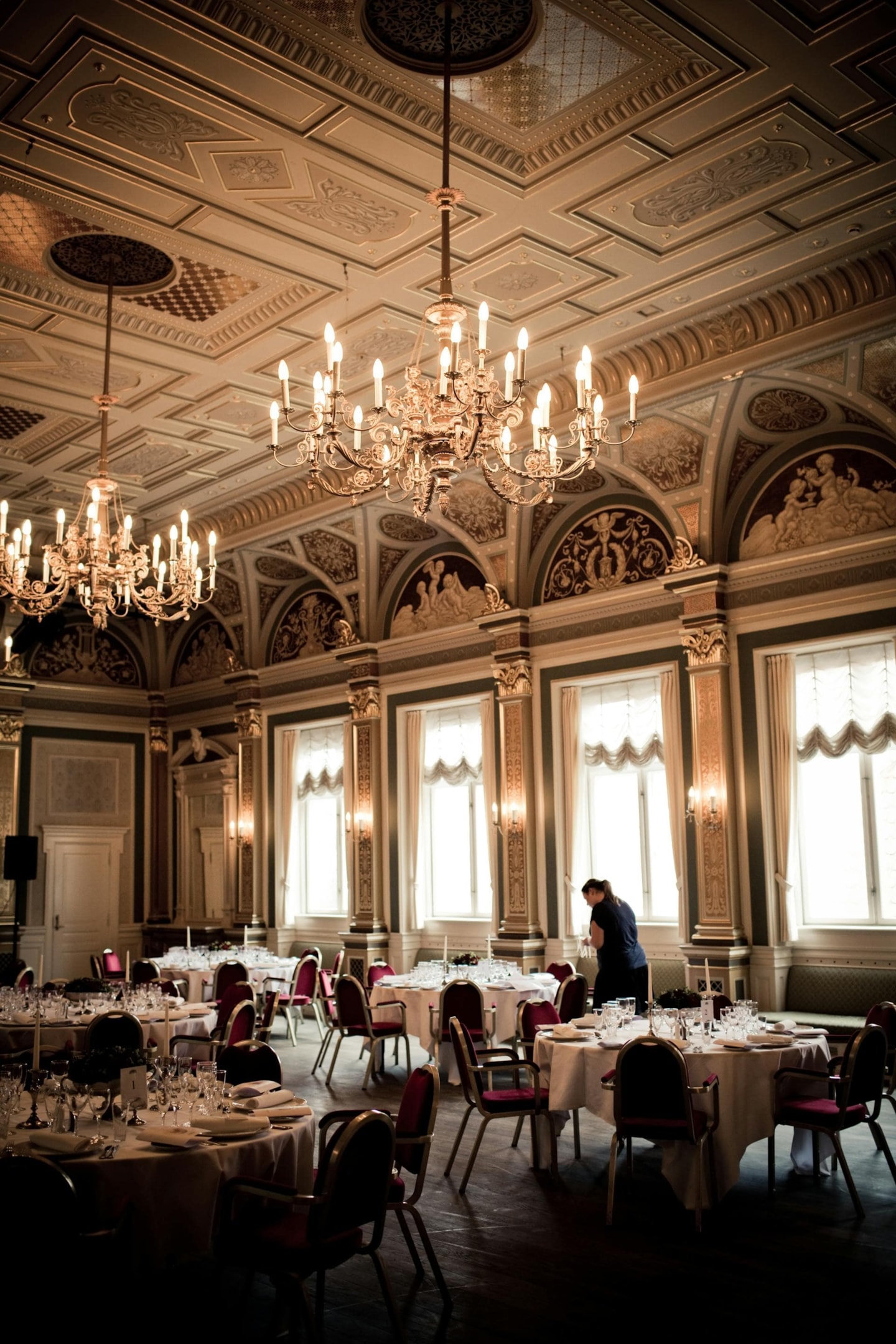
Ideal Height: When dealing with very high ceilings (over 10 feet), chandeliers should be hung about 3 feet below the ceiling to maintain proportion.
Why It Works: In larger rooms or rooms with tall ceilings, a chandelier should be installed low enough to allow its beauty to be fully appreciated without losing light efficiency. The height ensures the fixture remains a visual centerpiece without overwhelming the space.
Common Lighting Design Mistakes
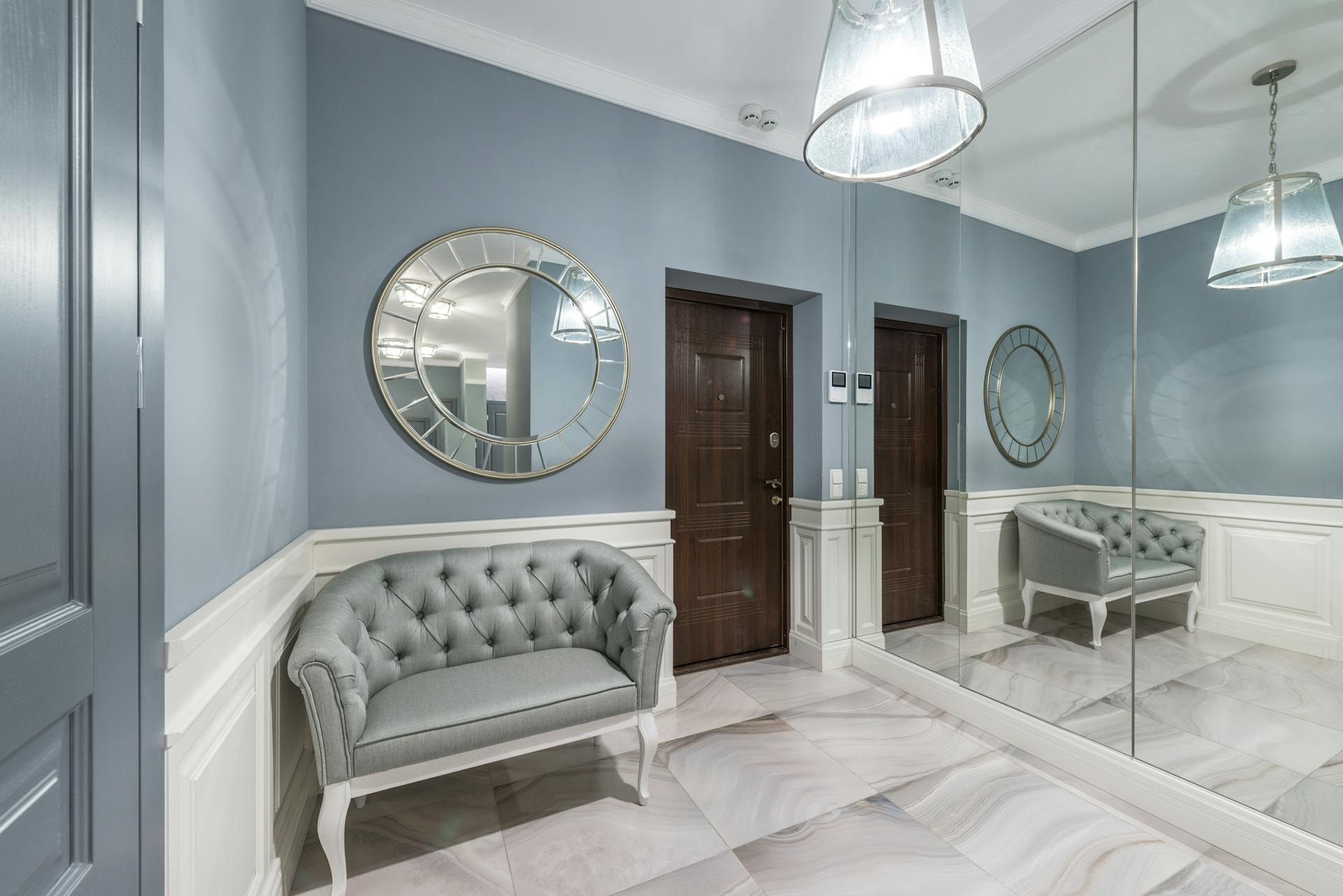
Avoid installing pendant lights too close together or too far apart on a dining table or kitchen island.
Choose pendant light height that are proportional to the size of the table or island.
Select pendant lights that are stylish and functional to create a beautiful space.
Properly installed pendant light height can make a eating space or kitchen a focal point in the room.
Proportions and Style of the Fixture
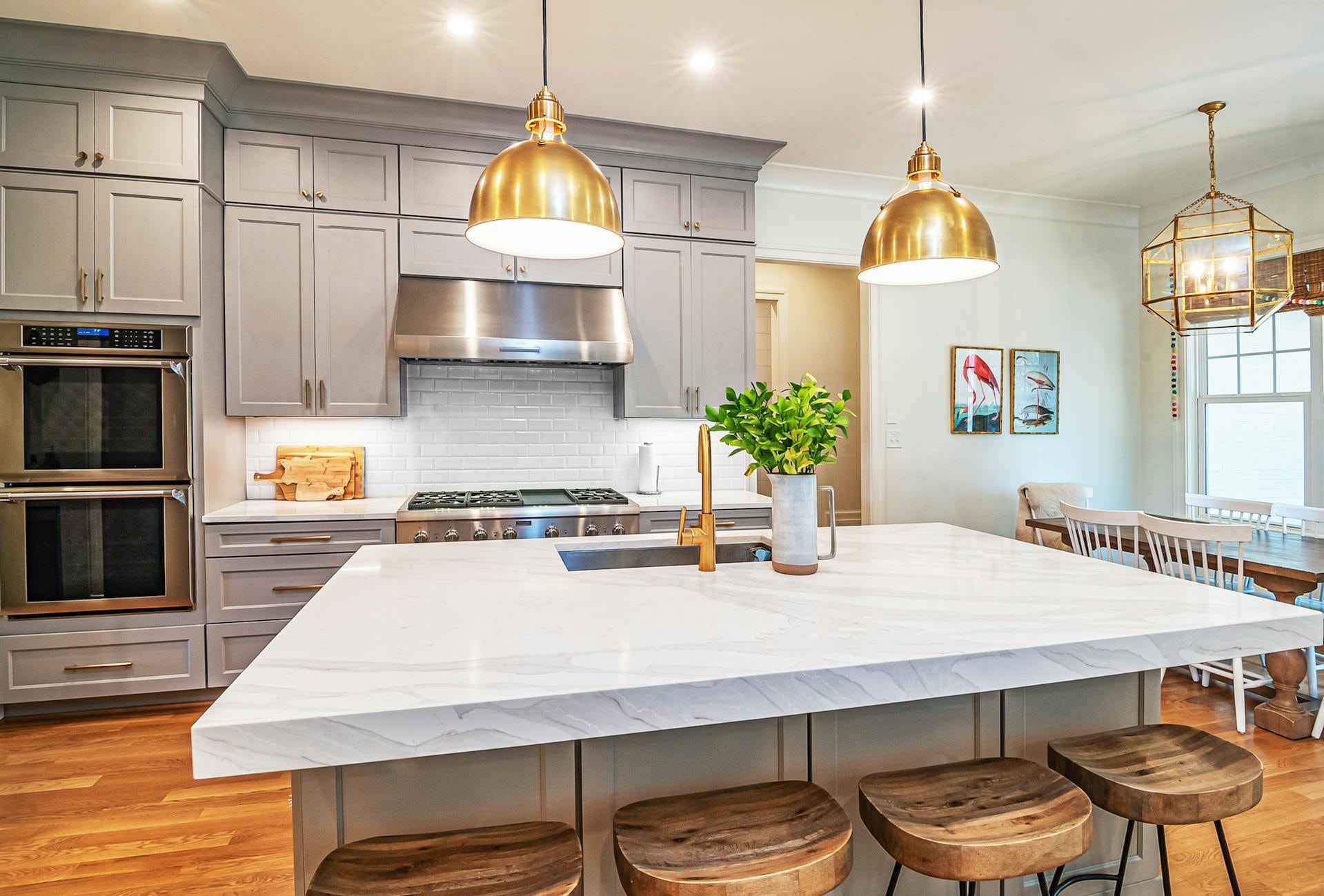
The proportions of the illumination fixtures should complement the scale of the dining area. In a large hall with high ceilings, a grand chandelier may need to be hung a little higher to make sure the fixture isn’t too imposing. On the other hand, in a smaller area, a small pendant light or a modest chandelier should be hung lower for intimacy and warmth.
Conclusion
Overhead lights are a stylish and versatile option for home lighting, but proper installation and choice are essential to maximize their functionality and aesthetic appeal. By considering the height, size, placement, and style, you can ensure that your Overhead lights not only light up your area but also enhance its overall look. Whether you're hanging pendants over your dining table, kitchen island, or in a living room, these rules will help guide you in creating a well-lit, beautifully designed area.
